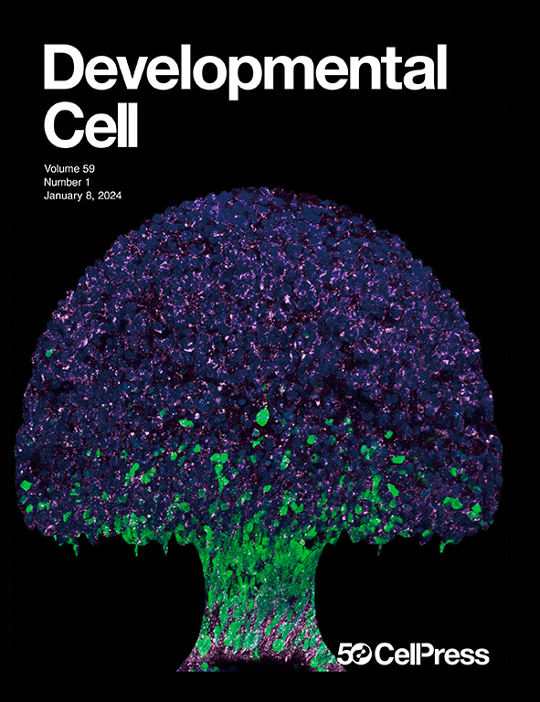Dev Cell. 2024 Jan 12:S1534-5807(23)00694-9. doi: 10.1016/j.devcel.2023.12.016
A mechanical wave travels along a genetic guide to drive the formation of an epithelial furrow during Drosophila gastrulation
Anna Popkova1, Urška Andrenšek2, Sophie Pagnotta3, Primož Ziherl2, Matej Krajnc4, Matteo Rauzi5
Affiliations
1Université Côte d’Azur, CNRS, Inserm, iBV, Nice, France.
2Faculty of Mathematics and Physics, University of Ljubljana, Jadranska 19, 1000 Ljubljana, Slovenia; Jožef Stefan Institute, Jamova 39, 1000 Ljubljana, Slovenia.
3Université Côte d’Azur, Centre Commun de Microscopie Appliquée, Nice, France.
4Jožef Stefan Institute, Jamova 39, 1000 Ljubljana, Slovenia.
5Université Côte d’Azur, CNRS, Inserm, iBV, Nice, France.
Abstract
Epithelial furrowing is a fundamental morphogenetic process during gastrulation, neurulation, and body shaping. A furrow often results from a fold that propagates along a line. How fold formation and propagation are controlled and driven is poorly understood. To shed light on this, we study the formation of the cephalic furrow, a fold that runs along the embryo dorsal-ventral axis during Drosophila gastrulation and the developmental role of which is still unknown. We provide evidence of its function and show that epithelial furrowing is initiated by a group of cells. This cellular cluster works as a pacemaker, triggering a bidirectional morphogenetic wave powered by actomyosin contractions and sustained by de novo medial apex-to-apex cell adhesion. The pacemaker’s Cartesian position is under the crossed control of the anterior-posterior and dorsal-ventral gene patterning systems. Thus, furrow formation is driven by a mechanical trigger wave that travels under the control of a multidimensional genetic guide.
DOI: 10.1016/j.devcel.2023.12.016

